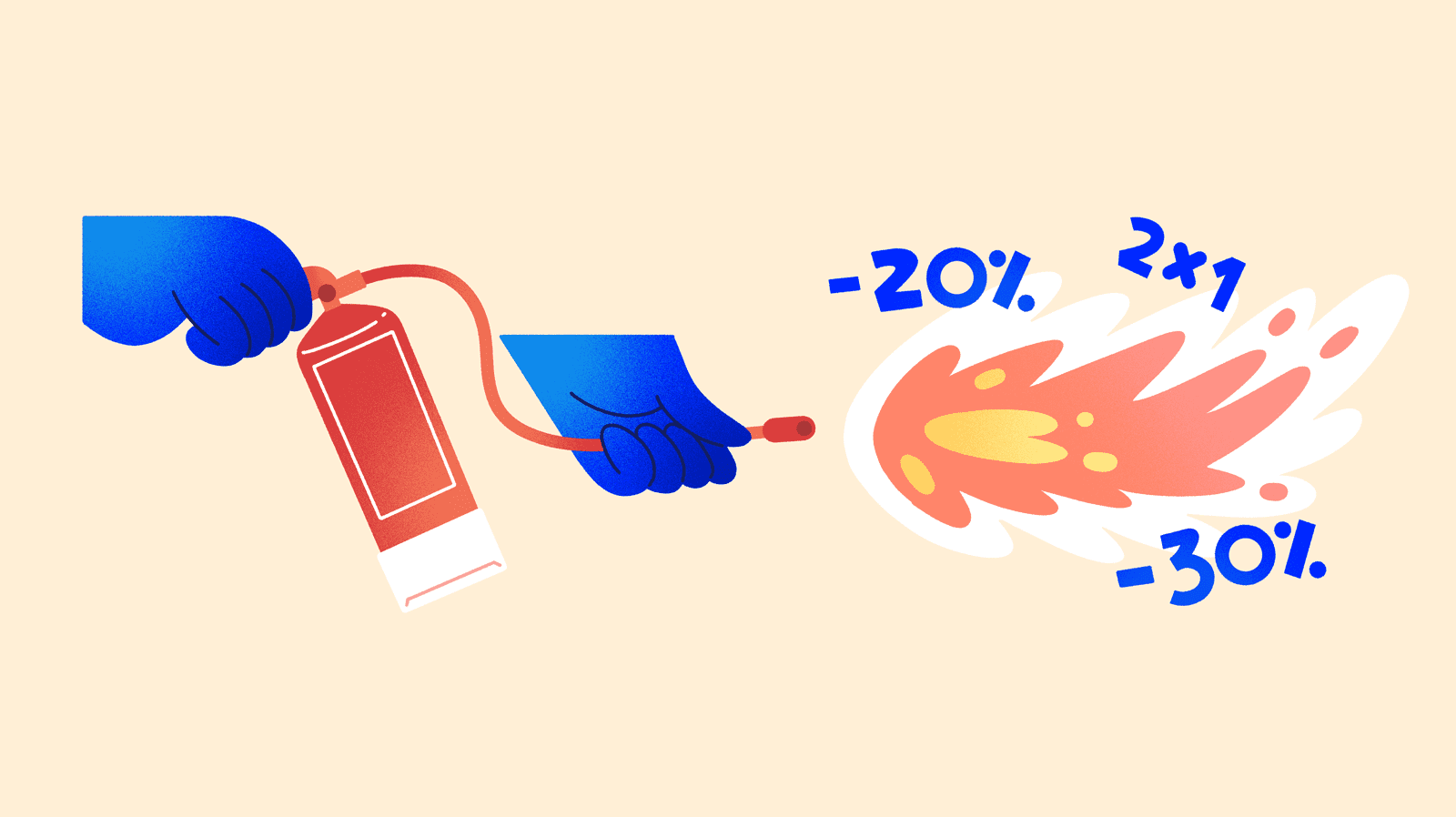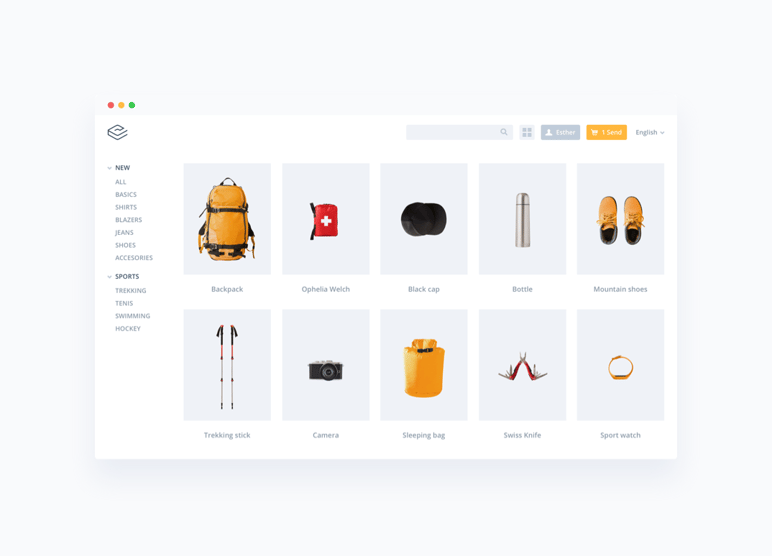
What are bargain shopping sites and how do they work?
Following the announcement that during this year, lots of sellers will only be able to apply discounts online, not in physical stores, many brands and retailers are looking for alternatives to expand their sales strategy.
Getting rid of stock accumulated during months of confinement is a priority for thousands of retailers and manufacturers who have seen their sales decline, especially where consumer goods are concerned.
Applying discounted prices in an online store is the standard plan that will now need an additional boost. While it’s quite easy to attract the attention of consumers on the high street with large "SALE" signs in shop windows, how can you attract internet traffic when surrounded by thousands of other stores with the same goal?
Even though positioning products on the internet involves more hard work (including SEO and SEM, advertising campaigns and promos on social networks, emails and retargeting actions), there is another outlet that’s becoming popular in an environment where consumers are more than ever, looking to save.
Bargain websites may not sound very good for a brand's prestige, but they’re actually visited by millions of users every day. They are platforms that collect together discounted products, promotional vouchers that circulate in various networks, and brands that are applying discounts on their websites.
Thus anyone can locate a "bargain", even if it is not part of a brand's listing nor are they following it on social media. And in the same way, brands and retailers achieve a degree of visibility that would otherwise be difficult to attain.
How to add your products to a bargain website
Many of the websites that gather internet bargains leave it up to users to send in or suggest the discounted products they come across, or they may have an editorial team in charge of scanning the Internet and sharing the best findings.
However, online stores, whether retail or brand, can also actively participate and thus win themselves a featured space, since the so-called bargain websites provide several options.
The main thing to bear in mind is that purchases are always made on the original website of the seller or brand, never on the platform that advertises the discounts. They have other ways of financing themselves, as we shall look at next.
- Affiliate programs: This is an agreement between the discount advertising platform and the online stores or shops. In exchange for placing your products on their website, they receive a commission for each sale you make through them. It is a similar operation to that of some marketplaces such as Amazon.
- Collaboration agreements: In this arrangement, a fixed fee is usually set, to be paid by the brand or seller to the website, in exchange for sending the platform links to its product offers. The bargain website can evaluate if it considers them appropriate and give them more visibility accordingly.
- Competition sponsorship: Participatory events on the internet have a lot of influence, especially on social networks. Some brands may put forward their products as prizes in this type of sweepstake or exclusive offers.
- Extra visibility: In some websites or marketplaces, such as Alibaba, if a seller or brand earns a good reputation and positive reviews among users, it can reap the benefit of gaining visibility for its announcements of special offers. The platform will be able to give them more space on the front page, banners or social network posts.
Bear in mind that these sites allow users to search for bargains by specific store, brand or keywords.
That’s why you should make sure you take care of SEO in your online store's product titles and descriptions, and provide quality product information in order to always respond immediately to shoppers' searches and gain good ratings from them.
A Product Information Management software system, such as Sales Layer's PIM, is fast becoming the most popular digital tool for managing online catalogs with precision and agility, thus improving your image across your online store and any other internet sales channels.

Ideas for discount strategies to boost online sales
We’ve seen that by choosing one of the programs offered by the bargain platform it will be easy to start placing your products on the radar of users on the look-out for offers.
However, one must be careful with the temporary nature of time-limited offers. Sometimes the offer announcements are still active on the bargain website when these have already expired on your website.
You can receive negative comments expressing frustration if this happens, so we’d recommend you monitor your discount marketing strategies carefully to see when to give them visibility and when to remove any reference to them.
Integrating these bargain sites into your marketing strategy for coordinated viral advertising campaigns can add a great deal of value to your conversions and boost your sales at times, like in summer, when consumers are more actively looking for bargains.
Discounts on products
This is the most common type of discount. You can apply it to a selection of products or to your entire catalog, according to any preference you have noticed for a particular category or collection from your regular customers.
Perhaps you’ll choose to focus your discount offers on the products with less pull rather than your best-sellers, which may be guaranteed to sell well even without an offer.
Remember that free shipping and returns conditions are highly attractive to online shoppers, now more than ever in the light of the forced situation of not being able to buy from physical stores, or at least not being able to do so safely and easily.
Vouchers
Although they also work for discount offers in the traditional manner, vouchers or promo codes can actually be applied to any product or category of products on a website, without your having to modify the product sheets and display a discounted price for each of them.
This strategy is useful if you only want some selected users to access the discounts, such as those who visit the bargain website and not just anyone who arrives at your online store.
Flash offers
These are discounts that try to spark an immediate action, motivated by the sense of grabbing a bargain before it vanishes.
However, if you wish to give your flash offer visibility on a given bargain platform, it’ll be better if you have an agreement with it to get your offer advertised quickly. Otherwise, it may happen that by the time a user decides to share your flash offer, it will already be over.
Quantity discount
This is the classic "buy more to save more" promo: three for two, BOGOF (Buy One Get One Free) or more extensive offers, depending on the type of product you are selling.
In this category of online discount, a quantity discount also works out favorably. The discount is only applied if the user spends more than a certain amount of money. This strategy relies on the consumer feeling motivated in knowing that although they’ve spent more overall, they’ve benefited from a reduced price by doing so.
Free gifts
Although this marketing strategy may not actually involve any discount on the product, it does attract the buyers’ attention. Who could object to receiving a freebie with the purchase of another product, whether related or not?
You can take advantage of this tactic to get rid of accumulated stock by boosting the sales of another product, or give away the same item with all types of purchases. For example, if you have an online cosmetic shop, you could gift a small bottle of a certain perfume that hasn’t proved very popular in the last months.
→ The way to a consumer’s heart is through a discount: Strategies for gathering more loyal customers
Giveaways
As we’ve mentioned in the options for collaboration with bargain websites, organizing participatory events can be highly motivating for online users.
In this way you can offer a special product to a number of people for free, yet in exchange for having collected very valuable data from consumers who are interested in your brand or type of product. From this new database, you can run customized marketing campaigns that can hold the attention of those users, even if they haven't won the competition, and turn them into real buyers.
Loyalty points
While this type of buying reward is not usually promoted on bargain websites, it's not a bad idea to remember it for your sales strategy.
If you provide customer registration or club membership, you can advertise extra loyalty points during a discount period, giving them access to exclusive promos or special voucher codes. Building loyalty to your store or brand can increase conversions much more effectively than bombarding thousands of different users every day with crazy offers.
Conclusion
While physical stores see a decrease in their visitor numbers and sales, online storefronts have become the main sales channel for most sellers, as well as manufacturers through a D2C (direct to consumer) sales model.
Given the enormous competition that exists on the web, one way to stand out is to take advantage of bargain websites that will publicize your offers to their large user base.
Another resource for your strategy to succeed, is to offer quality product information in your online ads and product pages, in order to boost satisfaction among your buyers.
A PIM software solution gives you both of these advantages — quality content and the ease of connecting to any website and platform you choose. Try the Sales Layer free trial for 30 days and discover your first bargain of the day.






.png?width=520&name=Blog%20Partner%20(3).png)

.png?width=520&name=Blog%20Partner%20(1).png)


